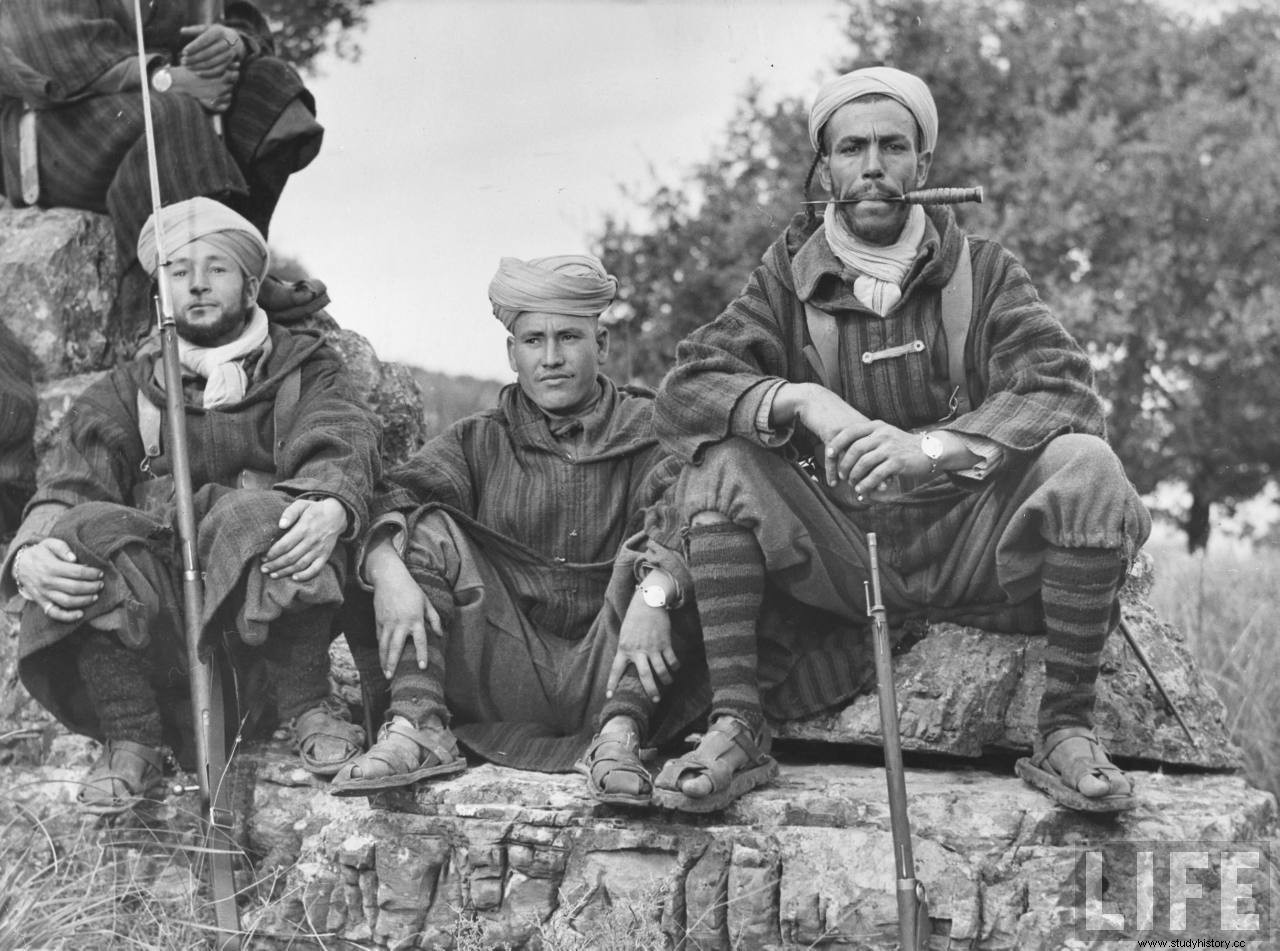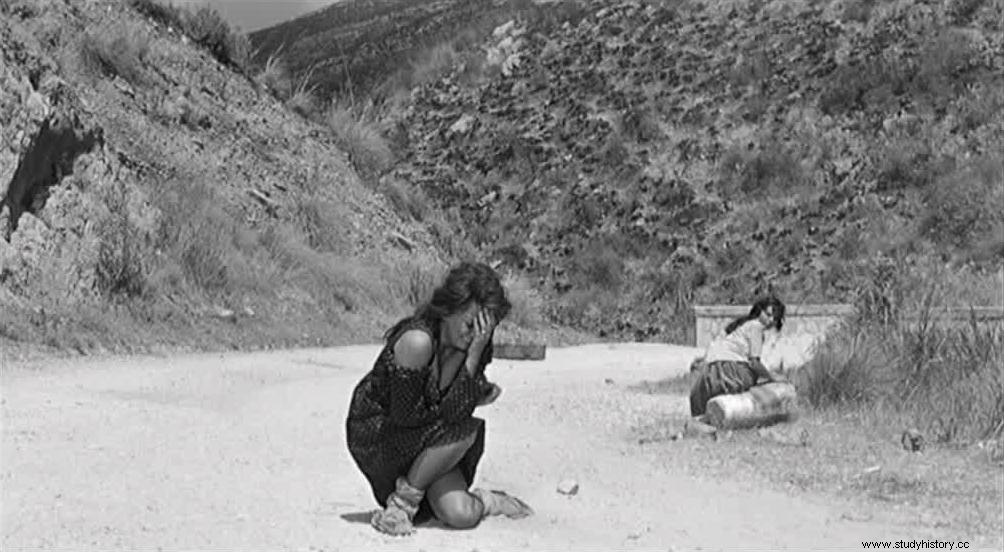This was the harangue received by the colonial troops of the French Expeditionary Corps (FEC) commanded by General Alphonse Juin shortly before defeating the Germans at the Battle of Montecassino (Italy)…
If they win this battle, for fifty hours they will be the absolute owners of everything they find beyond the enemy ranks. No one will punish them for what they do, no one will ask them for an explanation for what they take...
And boy did they.
After the landing in southern Italy, and from their base in Naples, the Allies' objective was to reach Rome to liberate it. They were just over 200 km, but the weather conditions (winter 1943) and the effective German resistance based on successive defensive lines made the advance difficult. The most important of these defensive lines was the so-called Gustav Line -about 100 km from the capital-, whose main axis was located in the town of Cassino and, above all, in the Monastery of Montecassino , located on a hill of 1,100 m, a strategic position to defend the road to Rome. It took 4 months (January to May 1944) and several attacks to defeat the Germans entrenched in the ruins of the monastery, destroyed by the Allied bombardment, and in which the Ghurkas took on a special role. Nepalis and the Goumiers from North Africa, specialists in mountain fighting, as well as the Second Corps of the Polish Army with the Voytek bear among its ranks.

Goumiers of the French Expeditionary Corps
The name of Goumiers originally given to irregular tribal troops fighting as allies with the French army in the 1900s in southern Algeria; later, it would go on to designate the Moroccan colonial troops of the French Expeditionary Corps. And it was these goumiers who took General Alphonse Juin's wretched harangue at face value. A term was even coined for what happened there… Marocchinate , mass rapes carried out by the goumiers against civilians of both sexes and of all ages after the battle of Montecassino… with the approval of the FEC officers.
According to Emiliano Ciotti, president of L’Associazione Nazionale Vittime delle Marocchinate …
From the numerous documents collected today we can say that there were at least 20,000 cases of rape. However, that figure does not reflect reality, since various medical reports from the time warn that a third of the women raped, either out of shame or modesty, chose not to report the crime. How to make a general assessment of violations committed by the "French Expeditionary Corps", which began its activities in Sicily and ended at the gates of Florence? [Although the term Marochinate was coined after the battle of Montecassino, many towns were visited by the goumiers] We can safely say that there were at least 60,000 women raped, and many of them on several occasions
Medical reports corroborate the brutality with which they were used, pointing to anal and vocal cord lacerations from the penetrations, broken teeth to prevent the victims from being bitten, impalement and castration - reserved especially for men who tried to defend their wives, mothers or daughters-, mutilations... and infections of syphilis, gonorrhea and other sexually transmitted diseases -only the use of US penicillin saved these areas from an epidemic-; Alberto Terilli , the parish priest of Esperia , he was tortured and sodomized for trying to save three women… General Juin never condemned the violence committed by his own soldiers. Testimonials... (in Italian with English subtitles)
On June 18, 1944 Pope Pius XII urged Charles de Gaulle to take action. A year later, the French courts had prosecuted 360 Moroccans for what happened on Italian soil... Not even the tip of the iceberg. On November 26, 2004, the president of an association of Moroccan ex-combatants, Ahmid Benrahhalate, officially apologized for what happened in Montecassino.

Still from “La Ciociara”
In 1957 Alberto Moravia published La ciociara , the story of two women, Cesira and her daughter Rosetta, who struggle to survive in occupied Italy and, after the liberation of Ciociaria, where they had taken refuge, her daughter is brutally raped by the goumiers. In 1960 Vittorio De Sica brought the novel to the big screen with La ciociara ("Two women » in Spain) and Sophia Loren She received the Oscar for Best Actress, the first time that award had been given to someone who had acted in a non-English language film.
Sources:Gli stupri nelle guerre mondiali – Michele Strazza, Associazione Nazionale Vittime delle Marocchinate
